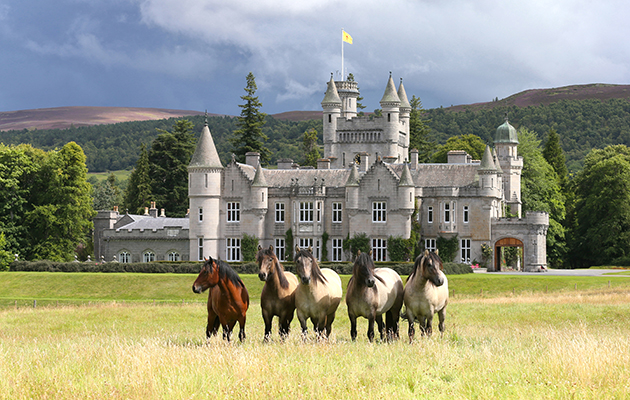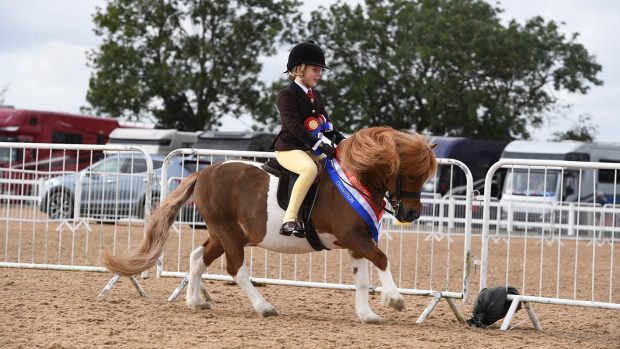Looking to buy a Highland pony to be your next best friend? If you’re wanting a ride for the show ring, or you are simply looking for a larger pony that’s hardy, versatile and fun, this native breed is definitely worthy of your consideration.
What is a Highland pony?
The Highland Pony is one of the three native pony breeds of the Scottish Highlands and Islands (alongside the Shetland and Eriskay), but there are now studs located throughout Scotland, England, Wales, Europe and across the rest of the word. The Highland pony was originally bred to work on small farms in Scotland, and while some ponies are still worked in parts of the countryside, they are now used for a variety of riding activities.
The Highland Pony Society (HPS) is the guardian of the breed and offers the following description on what to look for in a good example:
“The Highland pony is a strong, well-balanced, compact pony with all its features being in proportion to its height. It is one of the largest of the British native breeds and should show substance and strength. The strength and sound temperament of Highland ponies make them good work horses and they are still used in areas inaccessible to machines, such as in logging or to extract deer carcasses from the hill.”
Height: Not to exceed 14.2hh (148cm).
Head: Well carried and alert with kindly eye. Broad muzzled with a deep jowl.
Neck and Shoulders: Reasonable length of neck from wither with a good sloping shoulder and well placed forearm.
Body: Well balanced and compact with plenty of room for heart and lungs. Ribs well sprung.
Quarters and Hindlegs: Powerful quarters with well developed thigh, strong second thigh and clean flat hocks.
Legs: Flat hard bone, broad knees, short cannon bones, oblique pasterns and well shaped broad dark hoofs. Feather soft and silky. Ponies of Western Isles type may have striped hoofs which grow out at maturity.
Mane and Tail: Hair should be natural, flowing and untrimmed with a full tail.
Colours: A range of duns, mouse, yellow, grey, cream. Also grey, brown, black, bay and occasionally liver chestnut with silver mane and tail. Many ponies have a dorsal stripe and some show zebra markings on legs and shoulder. Foal coat colour often changes and many ponies change colour gradually as they grow older, especially those with grey hairs interspersed with the original colour. Others show a slight seasonal change in colour between winter and summer coats. Broken colours are not allowed. A small star is acceptable but other white markings are discouraged. Stallions with white markings other than a small star are not eligible for licensing.
Action: Straight and free moving without undue knee action.
Capabilities: A ride, drive and pack animal which can adapt to many equestrian disciplines.
The late Queen Elizabeth II was known for her love of the breed. She was a patron of the society and she bred Highland ponies under the Balmoral prefix. Her ponies won many titles, including the in-hand supreme at Royal Windsor.
The Highland Pony Enthusiasts Club says the fact that Highlands perform well in comparatively slow work such as trekking, forestry and deer-carrying suggests that they have a calm, steady temperament: “This makes them outstandingly suitable for the nervous or elderly, and they have also been used successfully as mounts for disabled riders, all of whom appreciate their confidence-giving attributes.
“However, it must not be thought that, because they are kind and reliable, they are also dull. For many a Highland has shown itself to be a keen, active ride in the hunting field and, correctly schooled, to be able to compete with great success in Pony Club and riding club activities – making up by sure-footedness and handiness what it may lack in outright speed. With the present revival in harness work both for showing and for pleasure, the ponies are once more proving their worth in this field also.
“Safe, reliable, friendly, a good, comfortable ride, constitutionally strong and hardy, attractive to look at, and with considerably more versatility than is generally appreciated, the Highland pony has so much to offer.”
Highland ponies are popular in the show ring and they have form at major shows. An example is stallion Benbreac Of Crolia who was the 2018 Royal International supreme pony, becoming the first native to land the title, while stallion Stirlingdene was supreme at HOYS in 2012.
What should I look for in a Highland?
Gillian McMurray is a leading judge and she also breeds Highlands under the Trailtrow Prefix. Ponies from the Trailtrow Stud have featured at Horse of the Year Show (HOYS) and London International several times, winning best of breed titles on many occasions. Gillian was supreme at Olympia in 1987 riding her foundation mare, Dunrowan Dolphin.
“I would recommend that most prospective buyers attend some big shows – such as Blair, the Royal Highland or the HPS breed show – to look at classes of ponies and see how much variation in type there is within the breed,” says Gillian.
“The type you would want for a top ridden pony would differ compared to the pony you’d need for hacking or deer work. If looking for a pony for the ridden job, I would want something with a good length of rein and a good shoulder, nothing too straight. Then, we want a lovely round hind-end with a short second thigh; this is the engine of the pony that pushes it forwards. There are a few ponies out there that are too straight in the hind-leg and it does show during their ridden work.
“Like with any pony, we want nice straight limbs that don’t deviate from the knee down, as well as good strong feet.
“Movement wise, the walk is a really important pace. Traditionally, the Highland would spend the majority of its time walking. Canter isn’t their natural pace; many can find it hard to come up off their forehand in the canter. However, if you find something with a good hind leg they will find it easier.”
Where should I buy a Highland from?
There are online sale sites that have Highland ponies advertised throughout the year.
“Attending shows to see what type of pony you are looking for is the best place to start,” says Gillian. “Then, it would be a case of approaching breeders. Some breeders produce for riding more than others, so it completely depends on what job you want your pony to do. Most breeders will have youngstock for sale, so if you’re looking for a pony that is up and running, you should check out breed enthusiast groups, or the HPS has a sales list on their website.
“Make sure you ask around to see if anyone has seen the pony out and about, especially if it’s done some showing,” Gillian adds. “This could help you gage if the pony is suitable for you and your set-up.”
How much should I expect to pay?
Prices vary greatly depending on the age and experience of the pony.
“I would be wary of something that is very cheap due to the general price of Highlands these days,” Gillian says. “There are only approximately 250 foals born each year, so prices have gone up. At minimum, you can expect to pay anything from £2,000 for a foal at weaning, and you can expect a reasonable amount to be added on each year. A pony ready for breaking could reach anything from £5,000 upwards. Winning ponies with experience have been advertised for around the £15,000 mark.”
I’ve found a pony, now what?
It is time to organise a pre-purchase vetting, something that is strongly recommended. If the pony is for a junior rider, asking for a trial period would be sensible, but not all sellers will agree to this.
It’s important to let the vet know prior to the vetting what you intend to use the pony for so they can assess it accordingly. If you tell the vet that you want the pony for the show ring, they should hopefully inform you of any blemishes or conformational faults which could impact its future career, even if they don’t impact its soundness or performance.
“A vetting is sensible, though a five-stage would not be appropriate for a youngster,” Gillian says. “If you’re going to view young ponies, do take someone experienced with you. If you are buying something up and running, then a vetting would be advised.”
For more information, you can read H&H’s ultimate guide to buying a horse.
- To stay up to date with all the breaking news throughout major shows throughout the year, subscribe to the Horse & Hound website
You may also be interested in:

The Highland pony: the tough working ponies who can shine in the show ring or in the hills
Find out more about this British native breed

Native breed experts pinpoint 6 core skills for your pony to be light, forward and responsive in the ring this season

‘He knew he was spectacular’: Farewell to one of the most prolific Highland ponies of all time

Go behind the scenes at The Queen’s Highland pony stud at Balmoral

Highland stallion bags supreme pony title at the Royal International Horse Show
With two contenders on the same marks, it was all the play for...

Subscribe to Horse & Hound magazine today – and enjoy unlimited website access all year round




